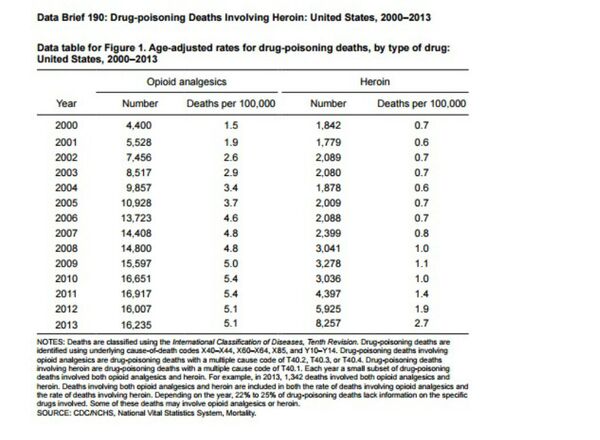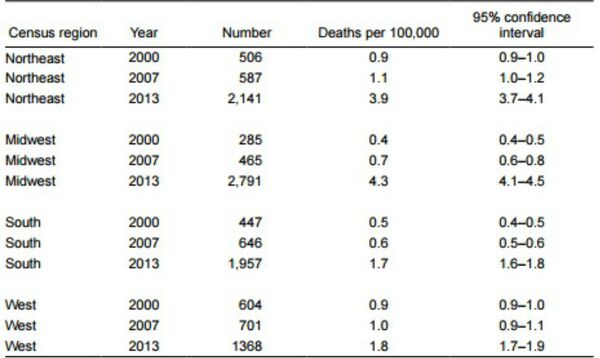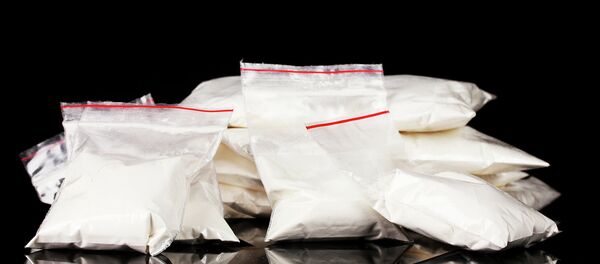“From 2010 through 2013, the age-adjusted rate for heroin-related drug-poisoning deaths nearly tripled from 1.0 per 100,000 in 2010 to 2.7 per 100,000 in 2013,” the CDC report reads.
The overall number of deaths increased from 3,036 in 2010 to 8,257 in 2013.

The data brief, which refers to drug overdose as “drug poisoning,” referred to a “steady increase” in the US in recent years.
“Drug poisoning (overdose) is the number one cause of injury-related death in the United States, with 43,982 deaths occurring in 2013,” said the report. “While much attention has been given to deaths involving opioid analgesics, in recent years there has been a steady increase in the number of drug-poisoning deaths involving heroin.”
According to the White House Office of National Drug Control Policy, heroin is primarily smuggled into the country from Mexico, listed as the primary supplier.

“Foreign sources of opium are responsible for the entire supply of heroin consumed in the US,” says the White House webpage on “The International Heroin Market.”
“Poppy cultivation and heroin production have been decreasing steadily in Colombia since 2001, when cultivation reached a peak of 6,540 hectares,” according to the White House. “In contrast, opium poppy cultivation in Mexico remains high, and Mexico continues as the primary supplier of heroin to the United States. Estimated cultivation of opium poppy reached 10,500 hectares in 2012, with an estimated pure potential production of 26 metric tons.”
“While the age-adjusted rate for drug-poisoning deaths involving opioid analgesics has leveled in recent years, the rate for deaths involving heroin has almost tripled since 2010,” said the report.
The report also showed the age-adjusted death rates related to various opioid analgesics — including hydrocodone, morphine and oxycodone — to show the frequency within specific age groups.

The Midwest currently holds the top position in the United States as the region most likely to see heroin overdoses, with 4.3 per 100,000 in 2013. Back in 2000, the Northeast and West were nearly equal in terms of age-adjusted heroin overdose death rates, at 0.9 per 100,000. That year the rate was 0.5 per 100,000 in the South and 0.4 per 100,000 in the Midwest.

“Each year a small subset of drug-poisoning deaths involved both opioid analgesics and heroin,” the report reads. “For example, in 2013, 1,342 deaths involved both opioid analgesics and heroin. Deaths involving both opioid analgesics and heroin are included in both the rate of deaths involving opioid analgesics and the rate of deaths involving heroin. Depending on the year, 22 percent to 25 percent of drug-poisoning deaths lack information on the specific drugs involved. Some of these deaths may involve opioid analgesics or heroin.”



